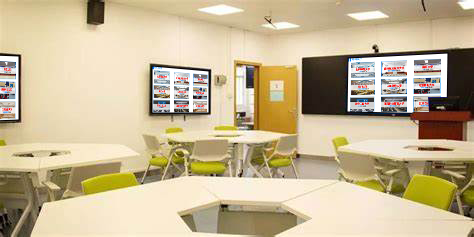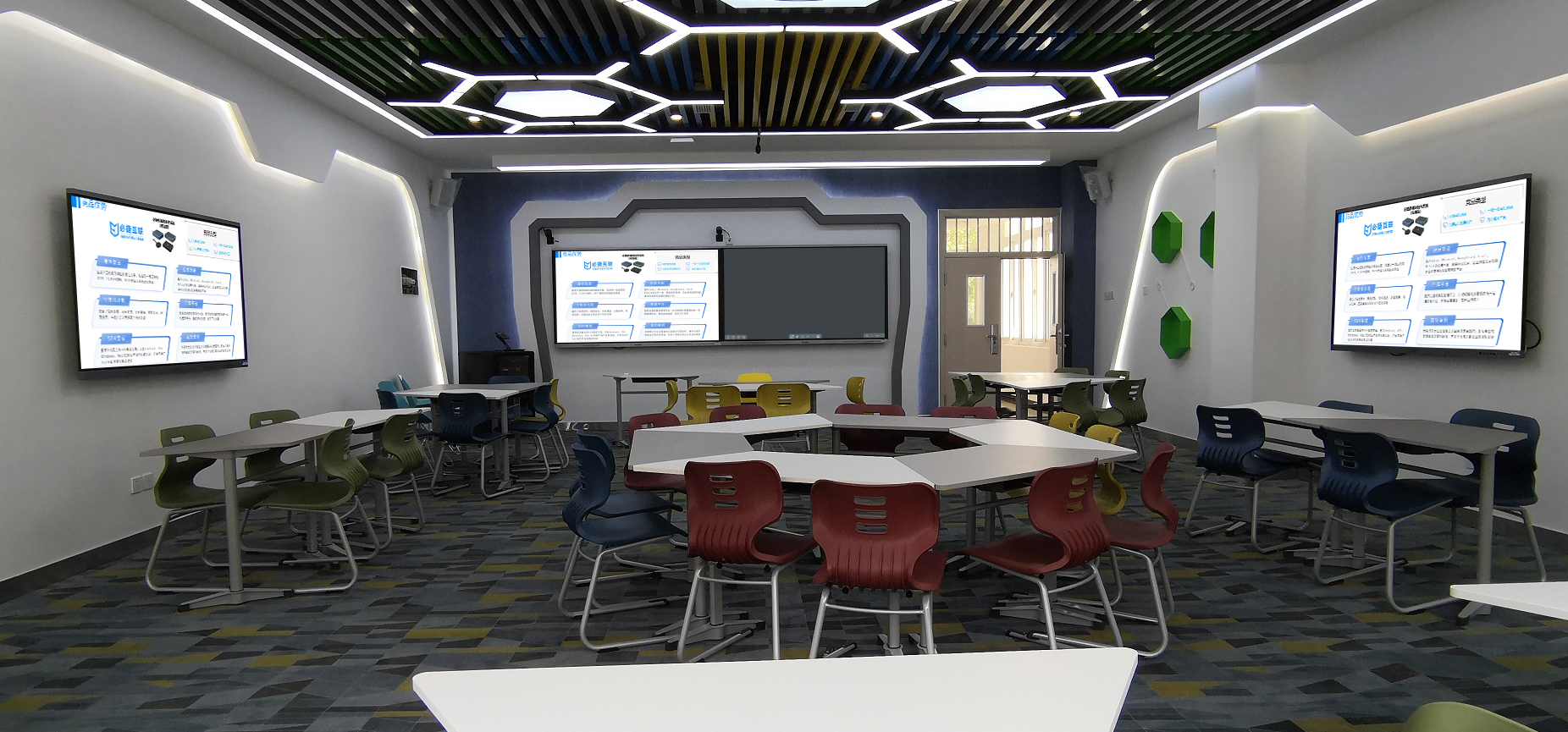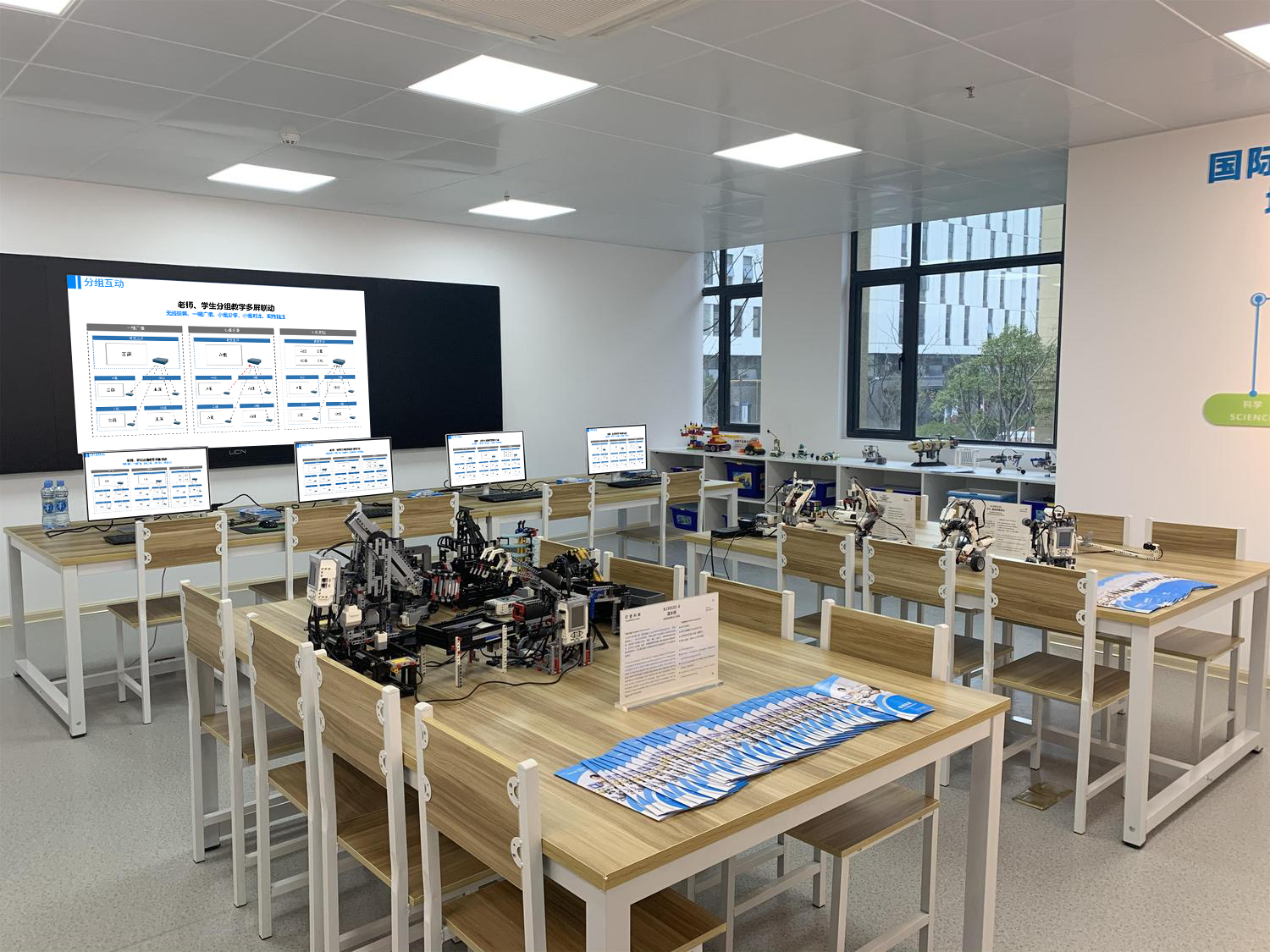Smart Classrooms: Revolutionizing the Teaching Experience, Ushering in a New Era of Education
In an era of rapid technological advancement, the field of education is undergoing profound changes. Smart classrooms, at the forefront of this transformation, are reshaping teaching models in unprecedented ways. They integrate various advanced technologies, breaking the limitations of traditional teaching and providing teachers and students with a brand new, highly interactive and efficient learning experience.
I. Full-Scenario Device Interconnection: Building a Seamless Educational Bridge
(I) Cross-Platform Compatibility, Smooth Connection for Teaching Devices
Smart classrooms support device access across mainstream operating systems, including iOS, Android, Windows, and macOS. Whether it’s a teacher’s Windows computer, a student’s iOS tablet, or an Android phone, all can easily connect to the classroom’s main display. In an English reading class, the teacher can mirror an e-textbook from their computer to the large screen to explain the text in detail. Students can then complete post-lesson exercises on their tablets and submit them in real-time, allowing the teacher to instantly get feedback on their answers. This cross-platform compatibility eliminates connection barriers caused by different device systems, enabling teaching resources to flow freely between various devices.
(II) Concurrent Multi-Device Usage, Coordinated Teaching Process
The system can simultaneously support connections for multiple devices, up to 8 devices online at once. During group discussions, members of each group can use their respective devices (phones, tablets, computers) to mirror their group discussion results to a dedicated group screen, facilitating in-depth discussion within the group. After completing their discussions, each group can also push their results to the main classroom screen with one click for the entire class to view. For example, in a classroom group discussion about historical event analysis, six groups can individually mirror mind maps, reference materials, and summary opinions from their devices. These are then compared and presented on the main screen, fostering whole-class exchange and significantly improving the efficiency and depth of classroom discussions.

II. Rich Interactive Features: Igniting Classroom Engagement
(I) Real-Time Annotation and Bidirectional Control
The classroom’s large display not only receives mirrored content but also possesses powerful reverse control capabilities. Teachers can directly annotate mirrored documents and courseware on the large screen, circling key points, writing out explanations, with these annotations synchronizing in real-time to students’ devices. Additionally, teachers can reverse-control students’ mirrored devices to view details of their completed assignments and provide on-the-spot guidance. In a math problem-solving lesson, the teacher can annotate a student’s mirrored solution steps on the large screen, pointing out errors and suggesting correct approaches. Students can clearly see the modifications on their own devices, as if the teacher were guiding them in person, enhancing the precision and interactivity of teaching.
(II) Interactive Quizzing and Instant Feedback
The smart classroom system has built-in rich interactive quizzing functions. Teachers can initiate various types of quizzes in class, such as multiple-choice, fill-in-the-blank, and short-answer questions. Students quickly answer using their devices, and the system immediately compiles the results, generating accuracy reports, error analysis charts, and displaying them on the large screen. In a physics class’s concept reinforcement session, the teacher can launch a 10-question multiple-choice quiz. After students answer, the system instantly compiles the class’s performance, allowing the teacher to quickly understand students’ grasp of concepts and provide targeted explanations for frequently missed questions, making teaching more focused and improving effectiveness.
III. Deep Data Accumulation: Supporting Precise Teaching Optimization
(I) Full Recording of the Teaching Process
The system automatically records all interactive data in class, including teacher’s mirroring operations, annotations, question frequency, as well as students’ answers, discussion participation duration, and speaking frequency. This data is categorized and stored by course, time, student, etc., forming detailed classroom teaching archives. After class, teachers can analyze this data to understand each student’s learning performance and identify strengths and weaknesses in the teaching process. For example, data might reveal that a particular student is not very active in class discussions and speaks infrequently, allowing the teacher to specifically encourage their participation in future interactions.
(II) Automatic Resource Archiving and Reuse
Various teaching resources generated in class, such as courseware with teacher annotations, excellent student assignments, and interactive quiz records, are automatically archived in a cloud resource library. Teachers can retrieve and reuse past teaching resources from the library at any time based on their teaching needs. When preparing lessons for a new semester, teachers can refer to previous year’s classroom interaction data and teaching resources to refine courseware, adjust teaching priorities, and modify interactive segments, improving lesson preparation efficiency and teaching quality. Simultaneously, students can access the resource library to review classroom content and reinforce knowledge.
IV. Diverse Scenario Adaptation: Meeting Various Educational Needs
(I) Daily Classroom Teaching
In daily teaching scenarios, smart classrooms provide teachers with a wealth of teaching methods. Teachers can use the large display to showcase high-definition images, videos, and other multimedia resources, making abstract knowledge intuitive and easy to understand. In a biology class, the teacher can mirror an animation video of cell division, allowing students to clearly see each stage and deepen their understanding of the subject. Moreover, with interactive quizzing and real-time annotation features, teachers can promptly assess students’ learning progress and adjust the teaching pace, making classroom instruction more efficient.
(II) Group Collaborative Learning
The multi-screen linkage and device interconnection features of smart classrooms create excellent conditions for group collaborative learning. Members within a group can share materials, collaboratively edit documents, and discuss problems using their devices, with the group screen conveniently displaying discussion results at any time. In a Chinese writing class, group members can share writing materials via their devices, brainstorm essay structures together on the group screen, and then, after completing a draft, mirror it to the main screen for review by the entire class and the teacher, improving writing skills.
(III) Remote Interactive Teaching
Through smart classrooms, schools can implement remote interactive teaching, breaking geographical limitations. They can conduct remote synchronized classes with schools in other regions, sharing high-quality educational resources. In remote schools, students can receive live lessons from high-quality urban schools via smart classrooms and engage in real-time interaction with the teaching faculty, asking and answering questions. For example, a mountainous school conducting a remote synchronized math class with a renowned urban school enables students from the mountainous region to actively participate in classroom interactions with urban students, broadening their learning horizons.
Smart classrooms, through their exceptional device interconnection capabilities, rich interactive functions, deep data accumulation, and diverse scenario adaptability, bring a comprehensive revolution to education. They make teaching more efficient, interactive, and precise, creating a vibrant and innovative learning environment for teachers and students, becoming a crucial force in promoting the modernization of education.